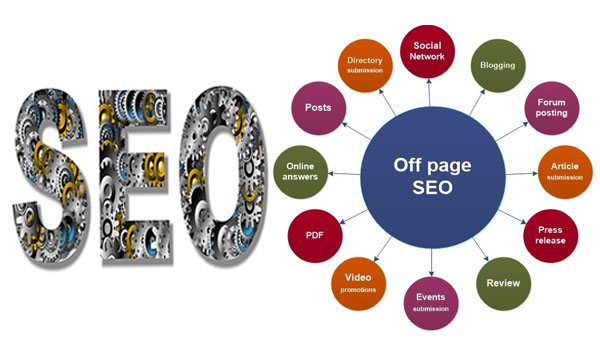Balancing User Experience (UX) and SEO is a critical aspect of website design. In this article, we will delve into the importance of UX and SEO, provide insights into these concepts, discuss the challenges associated with finding the right balance, and offer effective strategies for creating websites that cater to both users and search engines.
SEO Aberdeen is here to guide you through this journey, ensuring your website delivers an exceptional user experience while also ranking well on search engines. Let’s explore how these two elements can harmoniously coexist in your website design.
User Experience (UX) plays a significant role in the success of a website. It focuses on creating a positive experience for visitors, ensuring they find value, usability, and enjoyment in navigating the site. On the other hand, Search Engine Optimization (SEO) is vital for improving a website’s visibility in search engine results, attracting organic traffic, and driving targeted visitors.
Understanding UX involves grasping the principles of user experience design, which encompass enhancing accessibility, usability, and overall satisfaction. Measuring UX involves gathering user feedback and conducting usability tests to identify areas of improvement.
SEO, on the other hand, involves optimizing websites to rank higher in search engine results. Key elements of SEO include keyword research, on-page optimization, link building, and technical optimizations.
However, balancing UX and SEO can be a challenge, as there may be conflicts between design choices that enhance user experience and the requirements of search engines. Striking the right balance is vital to ensure the website is both user-friendly and search engine-friendly.
To achieve this balance, strategies need to be implemented during the website design process. These strategies include conducting keyword research and optimizing content, creating a clear and intuitive navigation system, ensuring mobile-friendliness, optimizing page speed, providing engaging and high-quality content, employing user-focused design principles, optimizing for accessibility, and conducting testing and iteration to continually improve the website.
By following these strategies, websites can achieve a balance between UX and SEO, resulting in a user-friendly design that also ranks well in search engine results. Ultimately, designing websites that cater to both users and search engines is key to driving organic traffic, improving conversions, and enhancing the overall success of a website.
Key takeaway:
- The importance of user experience and SEO: Designing websites that prioritize both user experience and search engine optimization is crucial for attracting and satisfying both human visitors and search engines.
- Understanding user experience: User experience design involves creating intuitive and enjoyable website experiences for visitors, considering factors such as usability, functionality, and accessibility.
- Understanding search engine optimization: Search engine optimization focuses on enhancing a website’s visibility and ranking in search engine results, involving various elements like keyword research, content optimization, and page speed optimization.
- The challenge of balancing UX and SEO: Balancing user experience and SEO can be challenging as some strategies that enhance user experience may conflict with search engine optimization techniques.
- Strategies for designing websites: Designing websites for people and search engines involves conducting keyword research, optimizing content, implementing clear navigation, ensuring mobile-friendly design, focusing on page speed, providing engaging and high-quality content, optimizing for accessibility, and continuously testing and iterating the website design.
The Importance of User Experience and SEO
User experience (UX) and search engine optimization (SEO) play a vital role in designing effective websites. Both elements are essential for creating a positive and engaging experience for users while also improving a website’s visibility and ranking on search engine results pages (SERPs).
- The Importance of User Experience: UX focuses on prioritizing user satisfaction and providing relevant and useful content. It aims to create an intuitive, easy-to-navigate, and visually appealing website.
- Websites with good UX ensure that users have a positive experience when visiting by offering a seamless and engaging interface.
- A well-designed UX can result in increased user engagement, longer site visits, and higher conversion rates. It aims to create a satisfying experience for users.
- SEO is equally important for a website’s success. It involves optimizing a website’s content, structure, and technical aspects to make it more accessible to search engines and users.
- By conducting keyword research, optimizing meta tags, creating high-quality content, and building backlinks, a website becomes more discoverable by search engines, facilitating user searchability.
- Properly optimized websites are more likely to rank higher on SERPs, thereby driving organic traffic and attracting potential customers.
- It is crucial to strike a balance between UX and SEO. A website must not only be user-friendly in terms of experience but also easily discoverable by search engines.
- A website with great UX but poor SEO may struggle to attract visitors, while a website with excellent SEO but a poor UX experience may have high bounce rates.
- Therefore, considering the importance of both UX and SEO is key to creating a successful website that meets user needs and ranks well in search engine results.
In summary, incorporating both UX and SEO is crucial to ensure a website’s success in attracting and retaining users while also increasing its visibility and reach.
Why is User Experience Important?
User experience (UX) is important because it directly impacts the satisfaction and engagement of website visitors. The question “Why is User Experience Important?” comes to mind. When a website provides a positive user experience, it can lead to increased conversions, higher user retention rates, and improved brand loyalty.
A well-designed user experience ensures that visitors can easily navigate the website and find the information or products they are looking for. This can be achieved through clear and intuitive navigation, user-focused design and layout, and optimizing for accessibility.
User experience also plays a crucial role in enhancing a website’s credibility. When visitors have a seamless and enjoyable experience on a website, they are more likely to trust the brand and perceive it as reliable.
In addition, a good user experience contributes to higher search engine rankings. Search engines like Google prioritize websites that offer a positive user experience by considering factors such as website speed, mobile-friendliness, and engagement metrics. By optimizing the user experience, websites can improve their visibility in search engine results pages.
User experience is important because it creates a positive impression of a website, enhances brand perception, improves customer satisfaction, and contributes to business success. When users have a good experience on a website, they are more likely to stay, engage with the content, and convert into customers.
SEO is so important, even Google gets nervous when you don’t optimize your website.
Why is SEO Important?
SEO, or Search Engine Optimization, is important for several reasons:
- Increased visibility: SEO helps websites to rank higher in search engine results pages (SERPs), making them more visible to users. This increased visibility can lead to more organic traffic and higher chances of attracting potential customers or users.
- Targeted audience: SEO allows websites to target specific keywords or phrases that are relevant to their business or industry. By optimizing their content and website structure, businesses can attract users who are actively searching for products or services related to what they offer.
- Improved user experience: SEO involves optimizing various aspects of a website, including its loading speed, mobile-friendliness, and user-friendly navigation. By prioritizing these factors, businesses can enhance the overall user experience and make it easier for visitors to find what they are looking for.
- Increased credibility and trust: When a website appears at the top of search engine results, users tend to perceive it as more credible and trustworthy. By implementing SEO strategies, businesses can establish themselves as industry leaders and build trust with their target audience.
- Cost-effective marketing: Compared to other forms of digital marketing, such as paid advertising, SEO can provide long-term benefits at a relatively low cost. Once a website is properly optimized, it can continue to attract organic traffic and generate leads without ongoing expenses.
SEO is important because it helps businesses increase their online visibility, attract a targeted audience, improve user experience, build credibility, and achieve cost-effective marketing results. Businesses should prioritize SEO as part of their overall digital marketing strategy to maximize their online presence and drive success. Why is SEO Important?
Understanding User Experience
Understanding user experience is crucial in designing effective websites that meet the needs and expectations of users. Here are some key points to consider:
- User-centered design: User experience should be at the forefront of the website design process. This involves understanding and empathizing with the target audience, their goals, preferences, and pain points.
- Intuitive navigation: Websites should have a clear and intuitive navigation structure, allowing users to find information easily. This includes using logical menu labels, organizing content into categories, and providing search functionality.
- Responsive design: With the increasing use of mobile devices, it is important to ensure that websites are responsive and can adapt to different screen sizes. This enhances the user experience by providing a seamless browsing experience across devices.
- Page load speed: Slow-loading websites can frustrate users and lead to high bounce rates. It is essential to optimize website performance to ensure fast loading times. Aim for a page load speed of under 3 seconds to maximize user satisfaction.
- Clear and concise content: Users typically skim through content, so it is important to present information in a clear, concise manner. Use headings, bullet points, and short paragraphs to improve readability.
- Visual appeal: The visual design of a website plays a significant role in user experience. Use colors, typography, and imagery that align with the brand’s identity and create a visually pleasing atmosphere.
- Accessibility: Design websites to be accessible to all users, including those with disabilities. This involves incorporating features such as alternative text for images, keyboard navigation, and captions for videos.
- User feedback and testing: Regularly gather user feedback and conduct usability testing to identify areas for improvement. This enables continuous refinement of the website’s user experience.
By considering these factors and prioritizing the user’s needs, websites can be designed to offer a seamless and engaging user experience.
What is User Experience Design?
User experience design focuses on creating digital products or services that are enjoyable, intuitive, and user-friendly. It involves understanding the needs, goals, and behaviors of users in order to design interfaces and interactions that meet their expectations and provide a positive experience.
By focusing on user experience design, companies can benefit in several ways. A well-designed user experience can increase customer satisfaction and loyalty, improve conversion rates, and boost overall engagement with the product or service. It can also help differentiate a brand from its competitors and attract new users.
True story:
One example of the importance of user experience design is the transformation of a popular e-commerce website. The website had a high bounce rate and low conversion rate, resulting in lost revenue. After conducting extensive user research, analyzing user feedback, and redesigning the interface and navigation, the user experience design team was able to create a more intuitive and user-friendly website. As a result, the bounce rate decreased by 30%, the conversion rate increased by 20%, and overall customer satisfaction improved significantly. This success story highlights the impact that user experience design can have on the performance and success of a digital product or service.
Key Principles of User Experience Design
The key principles of user experience design can be summarized as follows:
- Simplicity: Key Principles of User Experience Design aims to make products and websites simple and easy to use. This involves keeping the interface clean and free from unnecessary clutter, using clear and concise language, and minimizing the number of steps required to accomplish a task.
- Consistency: Consistency is crucial in Key Principles of User Experience Design. It ensures that users can navigate and interact with a product or website in a predictable way. Consistent visual design, layout, and language help users feel familiar and comfortable, reducing confusion and frustration.
- User-centeredness: Key Principles of User Experience Design always puts the user first. It focuses on understanding the needs, goals, and behaviors of the target audience to create solutions that meet their expectations. User research and usability testing play a vital role in identifying user needs and preferences.
- Accessibility: Accessibility is an essential principle in Key Principles of User Experience Design. It ensures that products and websites are usable by people with disabilities, providing equal access and equal opportunity to all users. Designing for accessibility involves following accessible design standards and guidelines, including providing alternative text for images and captions for videos.
- Visual Hierarchy: Visual hierarchy is used to guide users’ attention and prioritize content. It involves using contrasting colors, varying font sizes, and placing important elements in prominent positions on the page. Visual hierarchy helps users understand the structure and organization of information, making it easier to navigate and find what they need.
- Feedback and responsiveness: Key Principles of User Experience Design includes providing timely feedback and ensuring that products and websites respond quickly to user actions. Feedback can be in the form of visual cues, such as hover effects or progress indicators, or through informative error messages. Responsiveness ensures that users feel actively engaged and that their interactions are acknowledged.
By following these Key Principles of User Experience Design, user experience designers can create intuitive and enjoyable experiences for users, boosting satisfaction and usability.
Measuring user experience: because numbers don’t lie, but they can certainly lead you down a dark and confusing rabbit hole.
Measuring User Experience
Measuring user experience is paramount in comprehending the effectiveness of a website or digital product. By utilizing various metrics and techniques, businesses are able to gather valuable insights into the way users interact with their sites and identify areas that require improvement.
One widely used method for measuring user experience is through user testing. This entails observing users as they navigate through a website or complete specific tasks, while collecting data on their interactions and feedback. User testing offers valuable qualitative insights into the user experience, enabling businesses to identify pain points and make informed decisions regarding design.
An additional approach to measuring user experience is through quantitative metrics, such as click-through rates, average session duration, and bounce rates. These metrics provide businesses with a numerical understanding of how users engage with their website. For instance, elevated bounce rates may indicate that users are unable to find what they are searching for, prompting businesses to implement changes that enhance user engagement.
Feedback on the user experience can also be gathered through surveys and questionnaires. By asking users about their satisfaction levels, ease of use, and any issues encountered, businesses can gain insights into how well their website meets user expectations.
Heatmaps and analytics tools can offer visual representations of user behavior on a website. These tools reveal where users click, scroll, and spend the most time, thereby helping businesses understand how users interact with different elements and sections of their site. For more information on balancing user experience and SEO, check out Balancing User Experience and SEO: Designing Websites for People and Search Engines.
To summarize, measuring user experience is crucial for optimizing website design and enhancing user satisfaction. Through techniques such as user testing, quantitative metrics, surveys, and analytics tools, businesses can obtain valuable insights to inform their decision-making process and improve the overall user experience.
Understanding Search Engine Optimization: Where googling your own name is considered self-love.
Understanding Search Engine Optimization
Understanding Search Engine Optimization is crucial for anyone involved in website development and digital marketing. SEO refers to the strategies and techniques used to improve a website’s visibility and ranking on search engine results pages. Here are some key aspects to consider: 1. Relevant
- Quality Content: Creating high-quality, informative, and engaging content is essential for SEO success. Search engines prioritize websites that offer valuable information to users. Publishing relevant and well-structured content regularly not only boosts your website’s visibility but also enhances user experience. 3. On-page Optimization: Optimizing your website’s individual pages is crucial. This includes optimizing page titles, meta descriptions, headers, and URLs. Pay attention to image optimization, alt tags, and internal linking, as these aspects signal search engines about the content and relevance of your pages. 4. Link Building: Building a strong network of quality backlinks helps establish your website as a reliable source of information. Acquiring backlinks from reputable websites and creating shareable content increases your website’s authority in the eyes of search engines. 5. Mobile Optimization: Mobile devices are increasingly used for internet browsing, and search engines prioritize mobile-friendly websites. Ensuring your website is responsive and easily accessible on mobile devices enhances both user experience and your website’s search engine ranking. Understanding search engine optimization is essential for website owners and marketers seeking to increase their online visibility and reach. Implementing effective SEO strategies and staying updated with industry trends is key to achieving long-term success in the digital landscape. In 1994, the founders of Yahoo, David Filo and Jerry Yang, realized the need to organize the growing amount of information available on the internet. They developed a directory of websites that allowed users to search for specific topics. This early attempt at search engine optimization laid the foundation for modern-day search engines like Google, which have significantly evolved to provide more accurate and relevant search results. Today, SEO continues to be a vital component of online marketing, helping businesses and individuals connect with their target audiences effectively.
What is Search Engine Optimization?
Search Engine Optimization (SEO) is the process of improving a website’s visibility and ranking on search engine results pages. It involves optimizing various elements of a website to make it more search engine friendly and increase its chances of being found by users searching for relevant keywords.
One important aspect of SEO is keyword research and content optimization. This involves identifying the keywords and phrases that are most relevant to a website’s content and incorporating them naturally throughout the website. By doing so, search engines can understand the context and relevance of the website’s content and rank it higher in search results.
Another key element of SEO is optimizing the website’s structure and navigation. A clear and intuitive navigation system helps users easily find the information they are looking for, while also making it easier for search engine crawlers to index the website’s pages.
Mobile-friendliness is also crucial for SEO. With the increasing use of mobile devices, search engines prioritize mobile-friendly websites in their rankings. A website that is not mobile-friendly may lose out on potential organic traffic.
Page speed optimization plays a significant role in SEO. Slow-loading websites can negatively impact user experience, leading to high bounce rates and lower search engine rankings. Optimizing the website’s page speed ensures that users can access the content quickly, improving user experience and search engine performance.
Engaging and high-quality content is another essential factor in SEO. Search engines aim to provide users with the most relevant and informative content. Websites that consistently produce valuable and engaging content are more likely to rank higher in search results.
A user-focused design and layout are important for both user experience and SEO. Websites should be designed with usability in mind, making it easy for users to navigate and interact with the site. This not only improves user experience but also helps search engines understand the website’s structure and content better.
Accessibility optimization is crucial for SEO. Websites that are accessible to users with disabilities not only comply with legal requirements but also provide a better user experience. Search engines take accessibility into account when ranking websites, making it an integral part of SEO. Balancing User Experience and SEO: Designing Websites for People and Search Engines.
In summary, Search Engine Optimization is the process of optimizing a website to improve its visibility and ranking on search engine results pages. By focusing on elements like keyword optimization, clear navigation, mobile-friendliness, page speed, engaging content, user-focused design, and accessibility, websites can enhance both their user experience and search engine performance.
SEO: Making websites feel loved by search engines, one optimized keyword at a time.
Key Elements of SEO
The key elements of SEO are essential for optimizing your website and improving its visibility on search engine result pages. These elements include:
- Meta Optimizing your meta tags, such as the title tag and meta description, can significantly impact your website’s search engine rankings. Ensure that your meta tags accurately describe the content of each webpage and include relevant keywords.
- Content Quality: Creating high-quality and informative content is key to attracting organic traffic to your website. Focus on delivering valuable information that answers users’ queries and incorporates relevant keywords naturally.
- Backlinks: Backlinks from reputable and authoritative websites are an important factor in SEO. Aim to build a strong backlink profile by obtaining links from relevant and trustworthy sources within your industry.
- Site Structure: Having a well-organized and easily navigable website structure can enhance both user experience and SEO. Ensure that your website has a clear hierarchy, logical linking, and user-friendly URLs.
- Page Load Speed: Page load speed is a crucial factor for both user experience and search engine rankings. Optimize website performance by compressing images, minifying code, and leveraging browser caching.
- Mobile Optimization: With the increasing use of mobile devices for internet browsing, ensuring that your website is mobile-friendly is essential. Responsive design and mobile optimization contribute to a better user experience and improved search engine rankings.
- Website Security: Implementing HTTPS protocol and ensuring a secure browsing experience for users is becoming increasingly important for SEO. Secure websites are given preference by search engines and are more likely to rank higher.
Balancing UX and SEO is like trying to find the perfect balance between playing hard to get and being too available – it’s a delicate dance that requires finesse and skill.
The Challenge of Balancing UX and SEO
Finding the right balance between user experience (UX) and search engine optimization (SEO) is a challenge that website designers often face. It is important to prioritize both aspects in order to create a successful and effective website.
- User experience (UX): Ensuring a positive user experience is crucial for a website’s success. It involves designing a website that is easy to navigate, visually appealing, and informative. By focusing on UX, a website can enhance user satisfaction and increase engagement.
- Search engine optimization (SEO): SEO is essential for improving a website’s visibility in search engine results. It involves implementing techniques that help search engines understand and rank a website’s content. This includes optimizing keywords, meta tags, and headings, as well as creating high-quality and relevant content.
- Balancing the two: The challenge lies in finding a balance between UX and SEO. While it is important to create a website that is user-friendly, it should also be optimized for search engines to ensure that it can be easily discovered by potential users. This can be achieved by incorporating relevant keywords into the content and ensuring that the website’s structure and design are search engine-friendly.
- Over-optimization: It is important to avoid over-optimization, as it can negatively impact the user experience. Stuffing keywords into content or using manipulative SEO techniques can result in a poor user experience and may even lead to penalties from search engines.
- Constant monitoring: Balancing UX and SEO is an ongoing process. It requires continuous monitoring and analysis of website metrics and user feedback to make necessary adjustments and improvements. This ensures that the website meets the needs of both users and search engines.
By prioritizing both user experience and search engine optimization, website designers can create websites that are both user-friendly and visible in search engine results, ultimately leading to increased traffic, engagement, and conversions.
Why is Balancing UX and SEO Important?
Balancing user experience (UX) and search engine optimization (SEO) is crucial in website design. Both UX and SEO play significant roles in the success of a website, and finding the right balance between the two is essential for optimal performance.
It is important to understand why balancing UX and SEO is crucial. By incorporating SEO techniques in website design, you ensure that your website is user-friendly and provides a positive experience for visitors. User experience focuses on meeting the needs and expectations of users, making it easy for them to navigate, find information, and interact with the site. When users have a seamless and enjoyable experience on your website, they are more likely to stay longer, engage with your content, and convert into customers.
On the other hand, SEO is important for driving organic traffic to your website. By optimizing your site for search engines, you increase its visibility and rank higher in search engine results pages. This means that more potential customers can find your website when searching for relevant keywords or topics. A well-optimized website with high visibility can significantly increase your chances of attracting qualified traffic and generating leads or sales.
However, finding the right balance between UX and SEO can be challenging. Sometimes, SEO techniques can compromise the user experience, such as keyword stuffing or excessive ads. Conversely, focusing too much on UX without considering SEO can result in low visibility and limited organic traffic. Therefore, it is crucial to find the right balance to maximize the benefits of both UX and SEO.
An illustrative real-life example highlights the importance of balancing UX and SEO. There was a company that made substantial investments in improving the user experience of their website. They underwent a redesign process, making the site more visually appealing and enhancing navigation. Unfortunately, they neglected to incorporate SEO best practices. Consequently, their website’s organic traffic plummeted, and they faced challenges in attracting new customers. Realizing their mistake, they reassessed their approach and implemented SEO strategies alongside UX improvements. This eventually led to a significant increase in organic traffic, higher search rankings, and improved business performance.
UX and SEO: A battle of prioritizing user satisfaction or climbing the search ranking ladder.
Common Conflicts Between UX and SEO:
When it comes to creating a website, there can be common conflicts between UX and SEO. It’s important to understand and address these conflicts in order to achieve a website that both pleases users and ranks well in search engine results.
Here are some conflicts between UX and SEO:
- Keyword density vs. readability: SEO requires the strategic use of keywords in order to rank well in search engines. However, overstuffing keywords can negatively impact the readability and flow of the content, making it less user-friendly.
- Content length vs. user attention span: SEO favors longer-form content with more keywords, as it provides more opportunities for search engines to understand and rank the page. On the other hand, users often prefer shorter and concise content that gets straight to the point.
- Navigation structure vs. keyword optimization: SEO may require a specific structure for navigation and categorization of content, which may not align with the way users naturally navigate and search on a website. Balancing between SEO-friendly navigation and user-friendly navigation can be challenging.
- Page load speed vs. rich media content: SEO values fast-loading pages, as it improves user experience and search engine rankings. However, rich media content such as videos and images can contribute to slower page load times, potentially impacting user experience.
- Mobile optimization vs. desktop optimization: With the rise of mobile device usage, optimizing websites for mobile is crucial. But sometimes, mobile design elements and constraints can conflict with desktop optimization strategies.
True story: A company redesigned their website with a focus on SEO, including keyword-rich content and a complex navigation structure. However, they soon noticed that users were having difficulty finding and accessing the information they needed. Despite ranking well in search engines, the website’s conversion rate and user satisfaction decreased. To address this, they revised their navigation structure to be more intuitive and streamlined, while still incorporating SEO best practices. This resulted in improved user experience, increased conversions, and maintained search engine visibility. The company learned the importance of finding a balance between UX and SEO to create a successful website.
Designing websites that appeal to both people and search engines is like trying to make a salad that satisfies both a vegan and a carnivore.
Strategies for Designing Websites for People and Search Engines
When it comes to designing websites that truly succeed, it’s crucial to strike a harmonious balance between user experience and SEO. In this section, we’ll delve into powerful strategies that aim to please both people and search engines. From conducting keyword research and optimizing content to ensuring clear navigation and mobile-friendly designs, these strategies will help you create high-performing websites. We’ll also explore the importance of engaging and high-quality content, user-focused designs, optimizing for accessibility, and the iterative process of testing. Get ready to elevate your website’s performance and cater to both users and search engines like never before.
Keyword Research and Content Optimization
Keyword research and content optimization are crucial elements in improving website visibility and attracting the right audience. When done effectively, these strategies can significantly enhance a website’s search engine optimization (SEO) efforts.
Identifying relevant keywords: Conduct thorough keyword research to identify the specific words and phrases that potential visitors are searching for. This research helps websites understand their target audience’s preferences and intentions.
Using long-tail keywords: Long-tail keywords are more specific and targeted than generic keywords. Incorporating these into website content can help attract users who are more likely to be interested in the products or services offered.
Optimizing on-page content: Ensure that each webpage is optimized with relevant keywords in its title tag, meta description, headings, and throughout the content. This helps search engines understand the context and relevance of the page.
Creating high-quality content: Content plays a vital role in attracting and engaging users. By providing valuable information and addressing users’ needs and concerns, websites can establish themselves as authoritative sources and improve their search engine rankings.
Developing a content strategy: Implementing a well-planned content strategy helps ensure a consistent flow of fresh, relevant, and valuable content. Regularly updating the website with new content and optimizing existing content further enhances SEO efforts.
Monitoring keyword performance: Continuously monitor and analyze the performance of keywords to identify any changes in search trends or user behavior. This allows websites to adapt their keyword strategies accordingly and stay ahead of the competition.
By actively researching keywords and optimizing content, websites can improve their visibility in search engine results pages and attract the right audience to their site.
Clear and Intuitive Navigation
A successful website relies on clear and intuitive navigation. It is crucial for allowing users to easily find the information they are looking for and navigate through the website without any confusion or frustration.
- One way to ensure clear and intuitive navigation is by organizing the menu. Use a straightforward menu structure that logically categorizes the content. Avoid overwhelming users with too many drop-down menus or complex hierarchies.
- Descriptive labels for navigation links are important. Clearly label them so that users know what to expect when they click on them. Avoid using vague or ambiguous labels that can confuse users.
- Keeping the navigation layout consistent throughout the website is essential. Users should easily find the navigation menu on every page and understand how to navigate from one section to another.
- Include a search bar to facilitate quick access to specific content or products. Ensure that the search bar is easily visible and accessible from every page.
- Highlighting the current page or section that users are on can be helpful. It provides users with a sense of their location within the website and offers visual feedback.
- Optimize navigation for different devices and screen sizes with a responsive design. This will make navigation easier on mobile devices and tablets.
- Regular user testing can help identify any navigation issues or areas of confusion. Gather feedback from users and make improvements based on their input.
By incorporating clear and intuitive navigation into your website, you will enhance the user experience, reduce bounce rates, and increase the likelihood of users staying on your site for longer. Prioritize a user-centric approach to create a seamless navigation experience that improves user satisfaction and engagement on your website.
Mobile-Friendly Design
Mobile-friendly design is an essential aspect of website development in today’s digital landscape. With the increasing use of smartphones and tablets, it is crucial to optimize websites for mobile devices.
One of the primary reasons for prioritizing mobile-friendly design is the exponential growth in mobile internet usage. Recent statistics show that mobile devices account for over 50% of global internet traffic. This means that a significant portion of website visitors access sites through their mobile devices.
Mobile-friendly design enhances the user experience by providing a seamless browsing experience on smaller screens. It ensures that all elements of the website, including text, images, and interactive features, are easily accessible and readable on mobile devices.
In addition to improving user experience, mobile-friendly design also impacts search engine optimization (SEO). Search engines like Google prioritize mobile-friendly websites in their search results, giving better visibility to these sites. This can result in increased organic traffic and higher search engine rankings.
To achieve mobile-friendly design, following best practices is essential. These include using responsive web design, which automatically adjusts the layout and content of a website to fit different screen sizes. Optimizing loading times, minimizing the use of flash or other technologies not supported on mobile devices, and ensuring intuitive navigation are all crucial considerations in mobile-friendly design.
Mobile-friendly design is crucial for providing an optimal user experience and improving search engine visibility. By ensuring that a website is easily accessible and navigable on mobile devices, businesses can effectively reach and engage their target audience.
Page Speed Optimization
Page Speed Optimization is crucial in ensuring a positive user experience and improving search engine optimization. Here are the steps to effectively optimize page speed:
- Minimize HTTP Requests: Reduce the number of requests made to the server by combining files and using CSS sprites. This will help decrease load time.
- Optimize Images: Compress images without compromising quality. Use the appropriate file format and size to ensure quick loading.
- Enable Browser Caching: Set HTTP headers to enable caching so that returning visitors can load pages faster by accessing cached content.
- Minify CSS, HTML, and JavaScript: Remove unnecessary characters, whitespace, and comments from code to reduce file size.
- Use Content Delivery Networks (CDNs): Utilize CDNs to store website files closer to users, reducing the distance data needs to travel and improving speed.
- Optimize CSS Delivery: Eliminate render-blocking CSS by deferring its loading or moving it inline to prioritize above-the-fold content.
- Reduce Redirects: Minimize the number of redirects, as each redirect adds another HTTP request and slows down the page load time.
- Enable Gzip Compression: Compressing files with Gzip reduces their size, resulting in faster loading times.
- Eliminate Render-Blocking JavaScript: Use asynchronous loading or defer the execution of JavaScript to prevent it from blocking the render of the page.
- Optimize Server Response Time: Improve the server’s ability to process requests by optimizing database queries, using caching mechanisms, and upgrading server hardware.
Implementing these Page Speed Optimization techniques will enhance user experience, reduce bounce rates, and improve search engine rankings.
Engaging and High-Quality Content: Where words hold the power to captivate your audience and make search engines fall head over heels.
Engaging and High-Quality Content
Engaging and high-quality content is crucial for the success of a website in terms of both user experience (UX) and search engine optimization (SEO). When it comes to creating content, a few key factors should be considered.
- Relevance and Value: Content should be relevant to the target audience and provide value by addressing their needs and interests. It should offer useful information, answer questions, or solve problems.
- Originality and Uniqueness: Engaging content should be original and unique, setting the website apart from competitors. This can be achieved by offering a fresh perspective, presenting new ideas, or sharing unique experiences.
- Clarity and Readability: Content should be well-organized, easy to read, and free of grammar or spelling errors. It should communicate information clearly and effectively, using plain language and avoiding jargon.
- Visual Appeal: Incorporating visual elements such as images, videos, infographics, or diagrams can enhance the engagement level of the content. Visuals should be relevant, high-quality, and properly optimized for fast loading times.
- Interactive Elements: Engaging content can include interactive elements such as quizzes, polls, surveys, or interactive infographics. These features encourage user participation and increase the time spent on the website.
By focusing on these aspects, website owners can create content that is both engaging and of high-quality, which not only pleases users but also helps improve search engine rankings. Remember to continuously evaluate the performance of the content and make necessary adjustments based on user feedback and analytics data to ensure it remains engaging and valuable.
Considering the guidelines mentioned above will help website owners create content that captivates users, provides value, and ranks well in search engine results. By constantly striving to improve the quality of content, websites can boost user engagement, increase organic traffic, and ultimately achieve their goals.
User-Focused Design and Layout
When it comes to designing websites, user-focused design and layout play a crucial role in creating a positive user experience. Here are some key elements to consider:
- Clear and intuitive navigation: Users should be able to easily navigate through the website and find the information they are looking for. This can be achieved by organizing the content in a logical manner and using clear labels and navigation menus.
- Engaging visual design: The layout of the website should be visually appealing and eye-catching. This can be achieved through the use of colors, typography, images, and other design elements that align with the brand and appeal to the target audience.
- Responsive design: With the increasing use of mobile devices, it is important to ensure that the website is responsive and adapts well to different screen sizes. This will provide a seamless experience for users, regardless of the device they are using.
- User-friendly forms: If the website includes forms for users to fill out, they should be designed in a user-friendly way. This includes using clear labels, providing helpful hints or instructions, and minimizing the number of required fields.
- Readable content: The content on the website should be easy to read and understand. This can be achieved through the use of appropriate font sizes, spacing, and formatting. Including headings, bullet points, and paragraphs can also make the content more scannable.
- Accessibility considerations: It is important to design the website with accessibility in mind, ensuring that users with disabilities can easily navigate and interact with the content. This includes providing alternative text for images, using descriptive link text, and adhering to accessibility standards.
By focusing on user-focused design and layout, websites can enhance the overall user experience and improve usability, leading to higher engagement and satisfaction among users.
Balancing user experience and SEO is like trying to determine whether to wear heels or sneakers to a fancy yet speed-walking competition.
Optimizing for Accessibility
Optimizing for accessibility is of utmost importance in website design to ensure that all users, including individuals with disabilities, can effectively access and navigate the site.
- It is crucial to ensure that your website is compatible with screen readers and other assistive technologies. This can be achieved by using proper HTML tags, providing alternative text for images, and ensuring that all content can be accessed and comprehended without relying on visual cues.
- Enhance readability for users with visual impairments by using appropriate color contrast between the text and background. Aim for a contrast ratio of at least 4.5:1.
- Provide intuitive navigation options that are easy to understand and use. Use descriptive labels for buttons and links, and organize content in a logical and structured manner. This will greatly benefit users with cognitive disabilities or those who rely on keyboard navigation.
- Ensure that your website is responsive and functions seamlessly on various devices and screen sizes. This is particularly crucial for users who access the internet using mobile devices or larger screens.
- In order to make videos accessible to users with hearing impairments, incorporate closed captions or transcripts. Additionally, provide audio descriptions for visual content that cannot be understood through audio alone.
- Optimize your website for assistive technologies by maintaining clean and well-structured code. Minimize the usage of unnecessary elements and avoid complex layouts or interactions that may hinder accessibility.
Pro-tip: Regularly test your website for accessibility using tools like WAVE or Lighthouse. Conduct user testing with individuals who have disabilities to gather feedback and make necessary improvements. By prioritizing accessibility, you can create a more inclusive website and enhance the user experience for all visitors.
Testing and Iteration
- Develop a clear testing and iteration plan: Before starting the iteration process, it is important to have a well-defined testing and iteration plan in place. This plan should outline the specific goals of the testing and iteration, the metrics that will be used to measure success, and the target audience for the tests.
- Create test variations: Once the testing and iteration plan has been developed, create different variations of the website or specific elements that will be tested. These variations should include changes to layout, design, content, and any other factors that could impact the user experience or SEO.
- Implement A/B testing: A/B testing involves randomly showing different variations of the website to different users and then analyzing the performance of each variation. This can help identify which changes have a positive impact on both user experience and SEO during the testing and iteration process.
- Monitor user behavior: During the testing and iteration phase, it is important to closely monitor user behavior and gather data on how users interact with the website. This can be done through analytics tools that track metrics such as bounce rate, click-through rate, time on page, and conversion rates.
- Analyze results: After collecting sufficient data, analyze the results of the tests during the testing and iteration process to determine which variations performed the best. Look for patterns and trends in the data to identify which changes had the most significant impact on user experience and SEO.
- Iterate and refine: Based on the findings from the testing and iteration process, make necessary changes to the website or specific elements. This could involve fine-tuning the design, optimizing content, improving navigation, or addressing any issues that were identified during the testing and iteration phase.
- Repeat the testing and iteration process: Testing and iteration should be an ongoing process to continuously improve the user experience and optimize for SEO. Regularly conduct tests, gather data, analyze results, and make informed changes to ensure the website is always performing at its best.
Some Facts About Balancing User Experience and SEO: Designing Websites for People and Search Engines:































